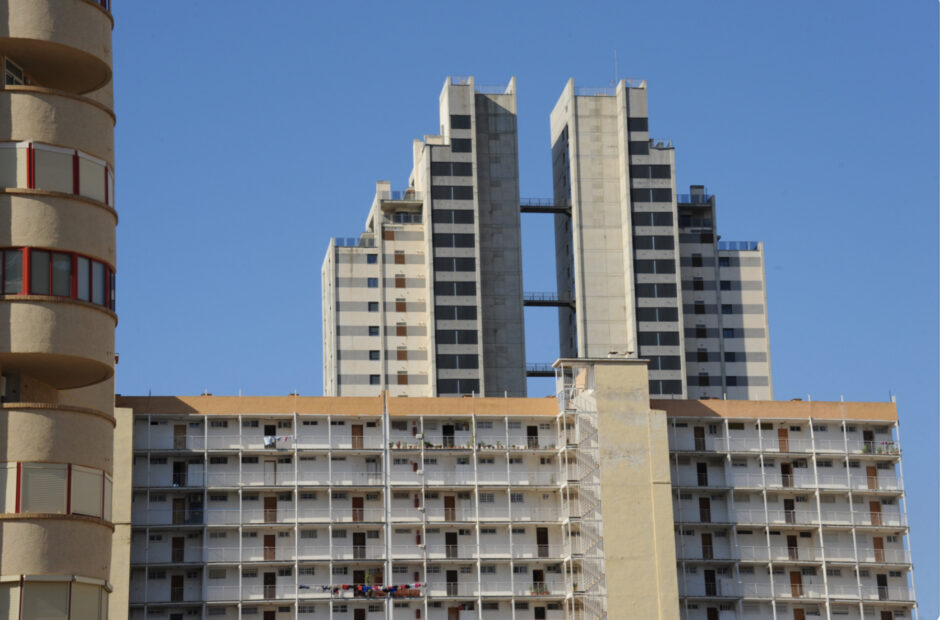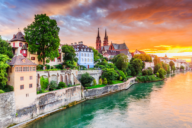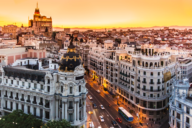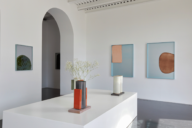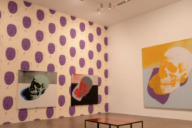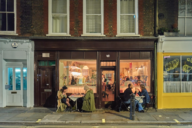Benidorm Architecture: A Kitschy Brutalist gem.
The epitome of Mediterranean excess; a sensory overload of Brits abroad, neon lights and unapologetic hedonism. A place where good taste goes to die, but fun thrives. Tacky, tasteless and utterly fabulous, it’s a celebration of all things garish and glorious.
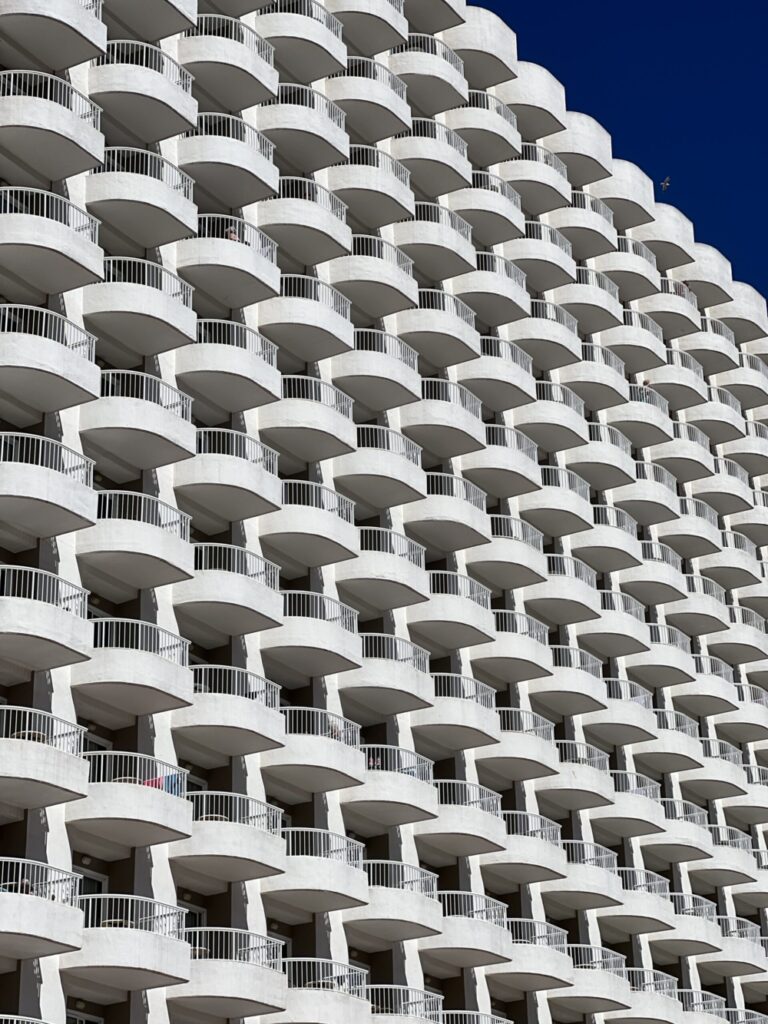
Benidorm is a place where the sun, sea and sand collide in beautiful chaos. From sipping sangria to indulging in paella, this Spanish hotspot is certainly a sensory explosion.
When you think of Spain, you may conjure up images of flamenco dancing, bullfighting and pristine beaches. But what about architecture? Enter Benidorm, the city on Spain’s eastern coast known for its towering skyscrapers, sports bars and charmingly kitschy aesthetics.
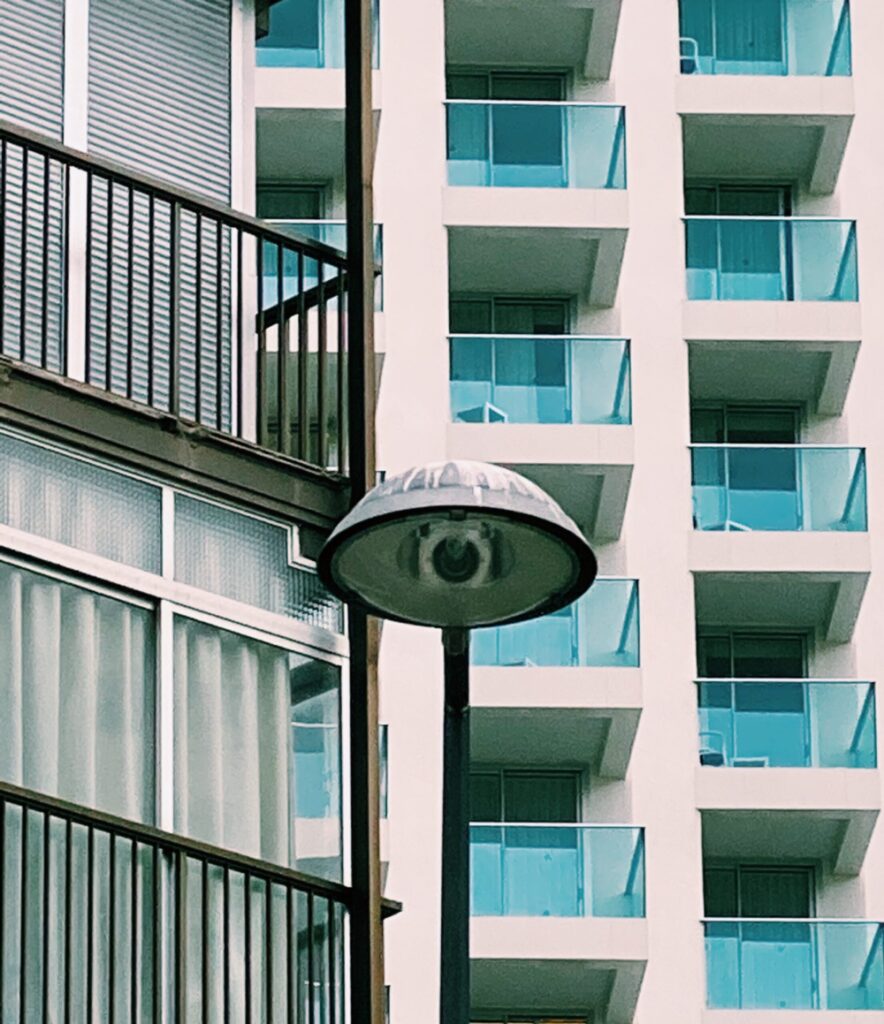
If you’re a fan of architectural styles, Benidorm might not be the first place that comes to mind. But trust us, there’s something special about the city’s eccentric architecture that’s worth exploring.
Nestled among the high-rise buildings are a number of Brutalist structures that offer a stark contrast to the city’s neon aesthetic.
Brutalist architecture in Benidorm emerged during the 1960s and 1970s when it was experiencing a rapid expansion due to the boom in tourism.
While it may not be the most visually appealing style, Brutalism which originated in the mid-20th century and is characterised by its use of raw concrete, blocky forms and lack of ornamentation, has a certain charm that has captured the hearts of many architecture enthusiasts (us included).
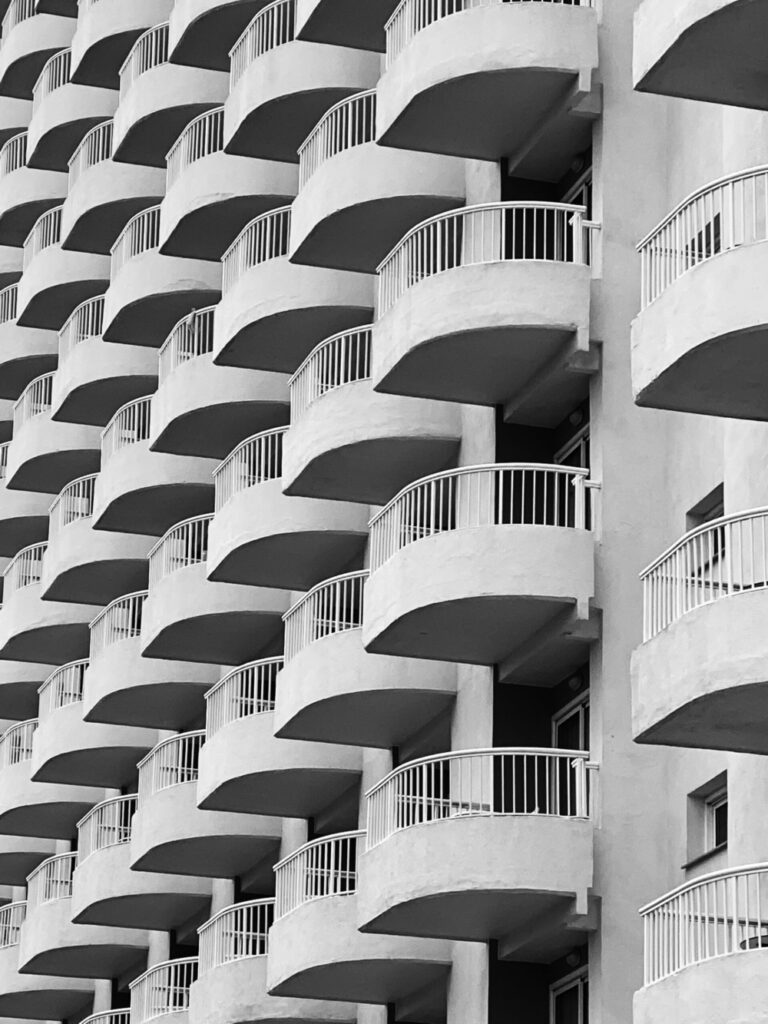
You can’t miss the two towering structures that dominate the city’s landscape – the Intempo and the Gran Hotel Bali. These impressive skyscrapers stand at 192 meters and 186 meters respectively, making them the tallest buildings in Spain outside of Madrid. The Intempo, in particular, is a marvel of modern architecture with its futuristic design and sleek lines. Completed in 2014, the building’s imposing, monolithic form is a true testament to the Brutalist style. However, it wasn’t without its controversies, with construction delays and financial issues causing a number of setbacks.
The Gran Hotel Bali, which was completed in 1970 has a distinctive triangular shape and exposed concrete facade and has been a prominent feature of the Benidorm skyline for over 50 years.
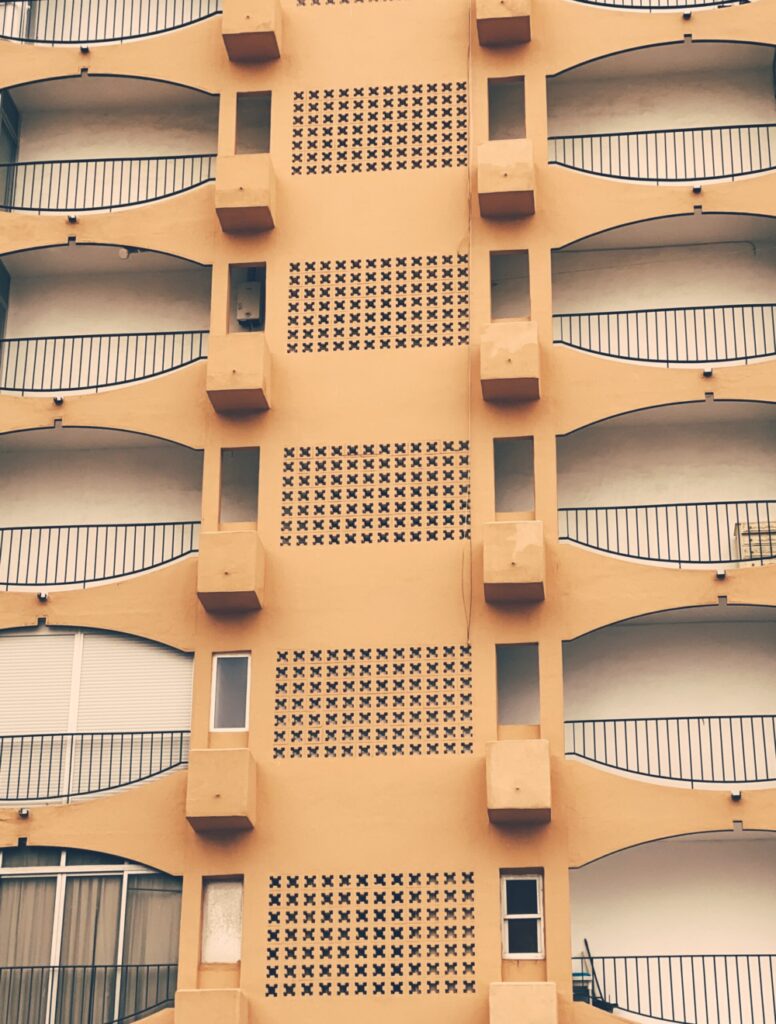
Another notable Brutalist building in Benidorm is the El Torrejó building, a residential complex built in the 1970s. While it may not have the same grandeur as the Intempo skyscraper, it still holds its own with its simple yet striking aesthetic.
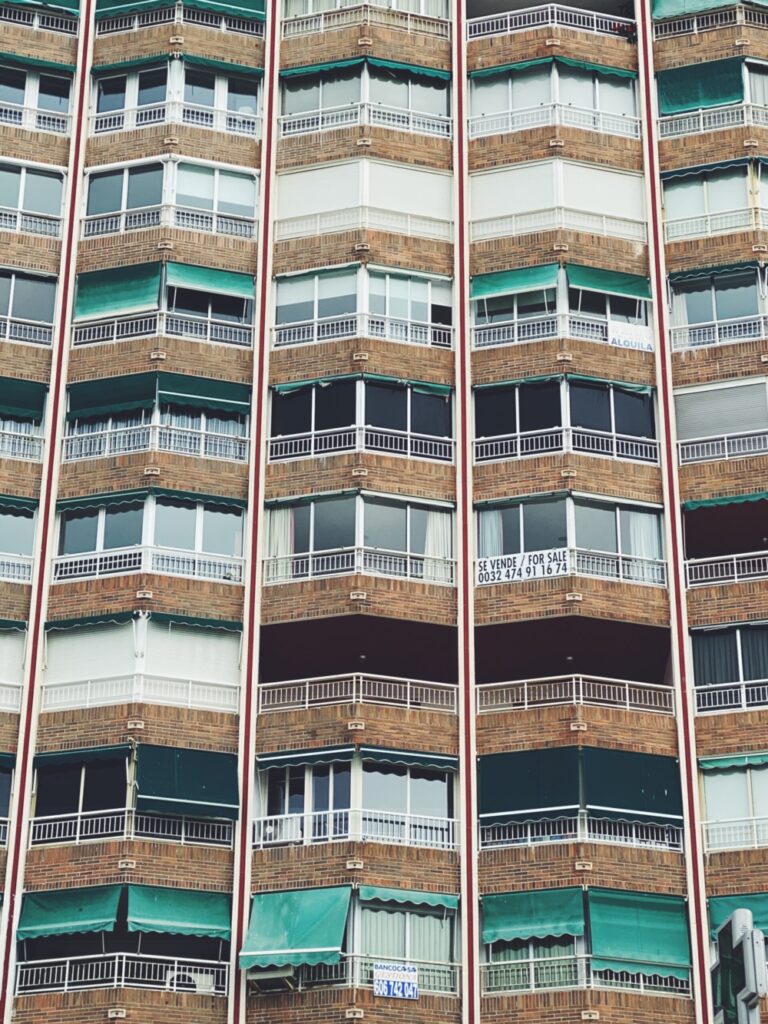
The Aqualandia water park, which opened in 1985, also features Brutalist influences in its design. The park’s entrance is marked by a striking concrete archway and many of the park’s buildings have exposed concrete surfaces and sharp, angular lines.
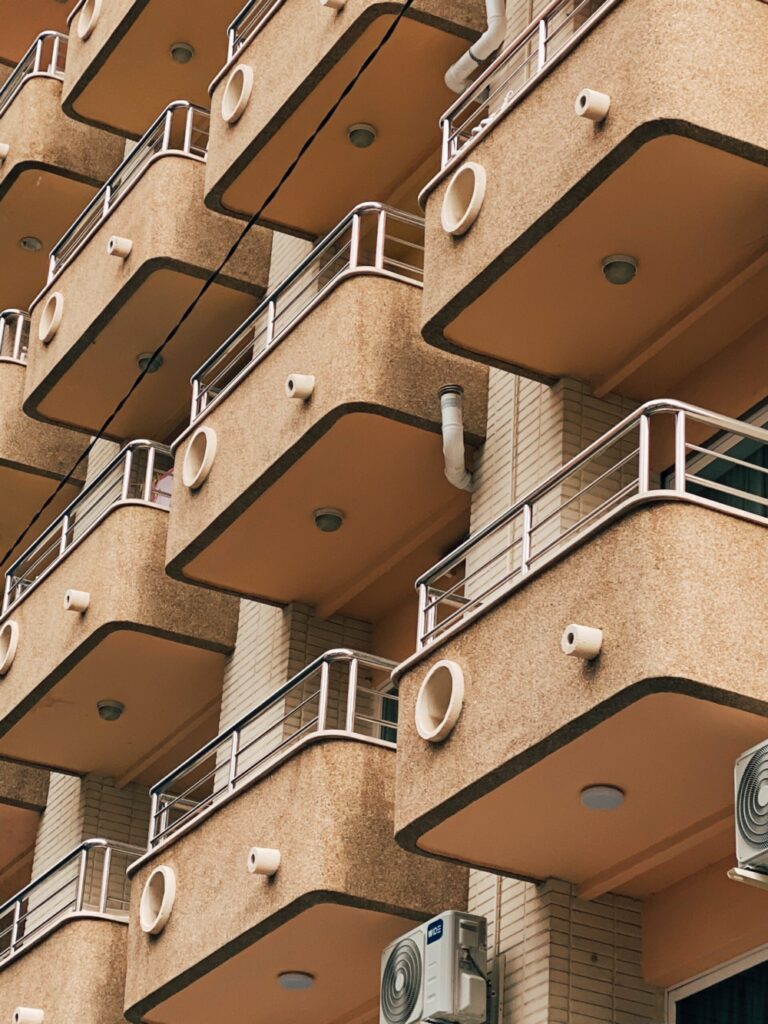
Despite its detractors, Brutalism continues to be a popular style among architects and enthusiasts alike. Its stark, utilitarian forms and lack of ornamentation offer a refreshing departure from the more ostentatious styles that dominate modern architecture.
The buildings represent an important chapter in the city’s development and offer a unique perspective on the intersection of modern architecture and traditional coastal landscapes.
In Benidorm, these Brutalist buildings offer a glimpse into the city’s architectural history and serve as a reminder that beauty can be found in even the most austere designs.
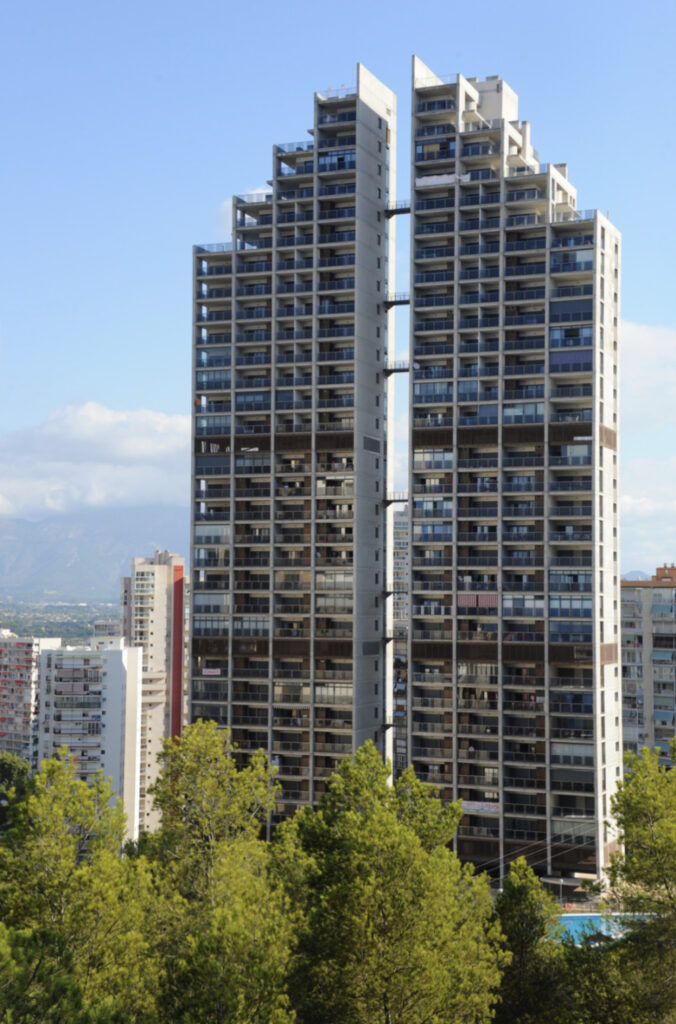
Other notable Brutalist buildings in Benidorm include:
Edificio Coblanca 3 – This residential building was completed in 1971 and features a distinctive geometric design with exposed concrete surfaces and sharp angles. It is located in the Rincón de Loix neighborhood and stands out among the more traditional Mediterranean-style buildings in the area.
Hotel Don Pancho – Completed in 1972, this hotel features a Brutalist design with a concrete facade and angular balconies. It was designed by architect Juan Serrano and was one of the first high-rise buildings in Benidorm.
Edificio Coblanca 33 – This residential building was completed in 1975 and features a Brutalist design with a concrete facade and sharp lines. It is located in the Levante Beach area of Benidorm and offers stunning views of the sea and surrounding landscape.
Examples of Brutalist architecture in other parts of Spain include:
Torres Blancas, Madrid – This residential building was designed by Francisco Javier Sáenz de Oiza in 1961 and completed in 1969. It is an iconic example of Brutalist architecture in Spain, featuring rough concrete surfaces, sharp angles and a unique curved shape.
Palacio de Deportes de la Comunidad de Madrid – This sports venue in Madrid was completed in 2005 and designed by architects Estudio Cano Lasso. It has a Brutalist-inspired design with exposed concrete surfaces, blocky forms and a distinctive triangular shape.
Universidad Laboral, Gijón – This massive complex was built between 1946 and 1956 and designed by architect Luis Moya Blanco. It is one of the largest buildings in Spain and features a Brutalist-inspired design with rough concrete surfaces, angular lines and a monolithic presence.

